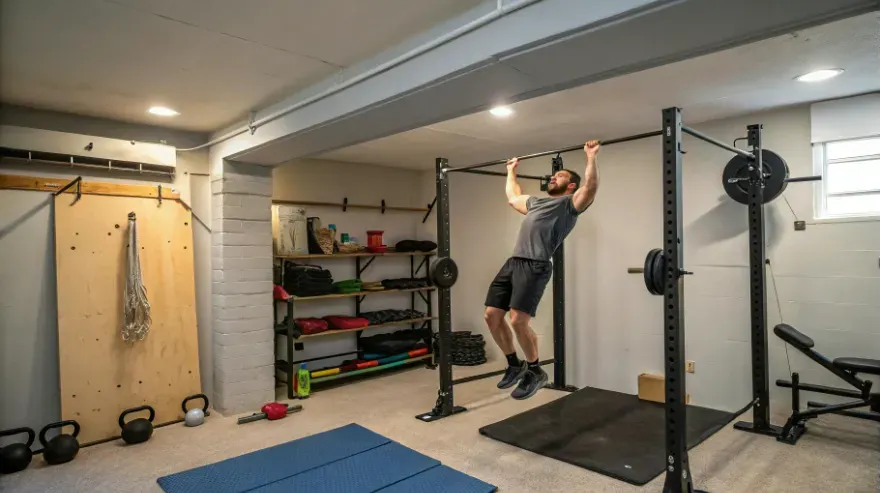Can I Build Muscle with Just Bodyweight Exercises? 6 Key Principles That Make It Possible

Yes — and not just a little. With the right strategy, bodyweight training can stimulate serious muscle growth, improve joint health, and develop functional strength that carries over into everyday life. Think of it this way: the same principles that apply in the weight room — mechanical tension, progressive overload, and recovery — also apply when you're using your own body as resistance.
Building muscle with bodyweight movements doesn’t require fancy machines or a gym membership. What it does require is a smart progression model, exercise variety, and consistency. Many athletes and military professionals have built formidable physiques using nothing but their body and gravity. The key lies in how you challenge the muscles over time — not necessarily the tools you use.
How Muscle Growth Works Without Weights
Muscle hypertrophy — the enlargement of muscle fibers — happens when you create enough resistance to stress the muscle. In weighted training, that stress comes from lifting heavier over time. In bodyweight training, it's about leveraging your own mass, changing angles, and increasing time under tension.
For example, a basic push-up can evolve into a diamond push-up, archer push-up, pseudo planche push-up, and eventually a handstand push-up — each variation demands more strength and control. The same applies to lower body exercises like squats progressing into pistol squats or shrimp squats. When done correctly, these movements fire up the muscles and provide sufficient stimulus to promote growth.
The Power of Progressive Overload Using Bodyweight
You don’t need dumbbells to overload a muscle — you just need a plan to make the movement more difficult over time. That might involve:
- Manipulating tempo (slowing down the eccentric phase)
- Increasing volume (more reps or sets)
- Reducing leverage (harder angles = more effort)
- Unilateral movements (one side at a time = double the demand)
For example, a standard pull-up can evolve into a typewriter pull-up, then a one-arm assisted pull-up. Each step forces the body to adapt by recruiting more muscle fibers, which leads to growth. This method trains strength and control, often in ranges of motion that weights can’t replicate.
Top Bodyweight Exercises That Build Muscle
You don’t need a massive list — just a few compound moves done well. Here's where you’ll get the most bang for your buck:
- Push-ups (and their variations)
- Pull-ups and chin-ups
- Dips
- Squats and pistol squats
- Lunges and step-ups
- Bridges and hip thrusts
- Planks and core holds
What matters is how you perform them. Focus on full range of motion, control, and proper muscle activation. Don't rush your reps — treat every set like it matters, because it does.
Common Mistakes That Limit Muscle Gains
Many people assume bodyweight means “easy,” and then wonder why they’re not growing. The usual culprits?
- Lack of progression — Doing the same push-up style for months without advancing.
- Poor form — Rushing through reps or failing to use a full range of motion.
- Neglecting intensity — Not pushing close enough to muscular fatigue.
- Ignoring lower body — Skipping single-leg variations that build powerful legs.
If you're hitting a wall, it’s probably not the method — it’s the execution. Dial in your form, challenge your muscles, and track your progress just like you would with weight training.
Nutrition and Recovery: Still Non-Negotiable
No matter how hard you train, muscle is built in the kitchen and while you sleep. That means:
- Eating enough protein — Aim for around 0.7 to 1 gram per pound of body weight daily.
- Being in a slight caloric surplus — If your goal is growth, fuel your training.
- Prioritizing sleep — 7–9 hours a night to optimize recovery and hormone function.
Training without weights doesn't mean you can skimp on the fundamentals. Your body still needs raw materials (food) and time to rebuild stronger.
Who Benefits Most from Bodyweight Muscle Training?
Bodyweight muscle training is ideal for:
- People training at home or while traveling
- Those recovering from injury needing joint-friendly movement
- Beginners building a strength foundation
- Advanced athletes who want to master control and mobility
Whether you're starting from scratch or looking to level up, bodyweight training can be scaled to any ability level. You just have to be willing to experiment and stay consistent.
The Takeaway
Yes — you can build muscle with just your body. It may not look like a traditional weightlifting routine, but when executed with precision, bodyweight training is a powerhouse method for hypertrophy, strength, and resilience. It trains your muscles to be useful, not just big.
The challenge? It requires creativity, discipline, and a willingness to push the limits of what seems “basic.” But if you're in it for the long haul, your body will respond — and not just in how it looks, but in how it moves, performs, and feels.
